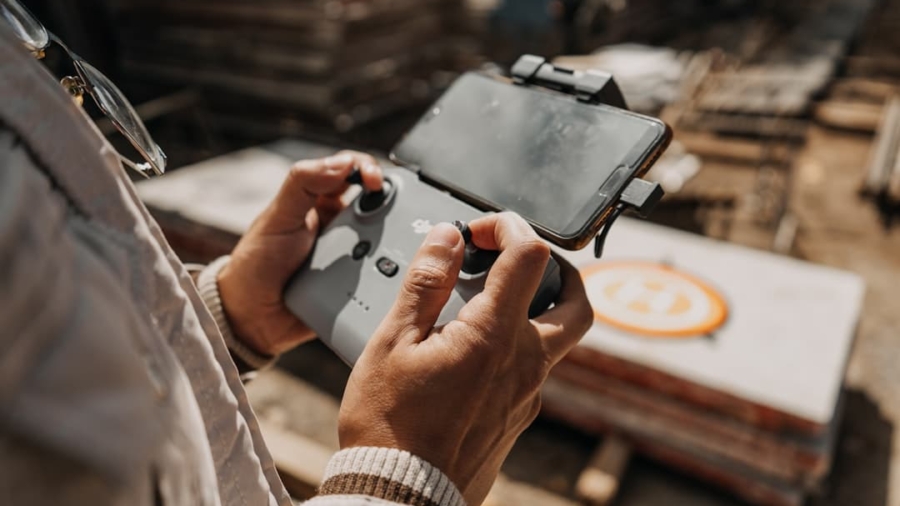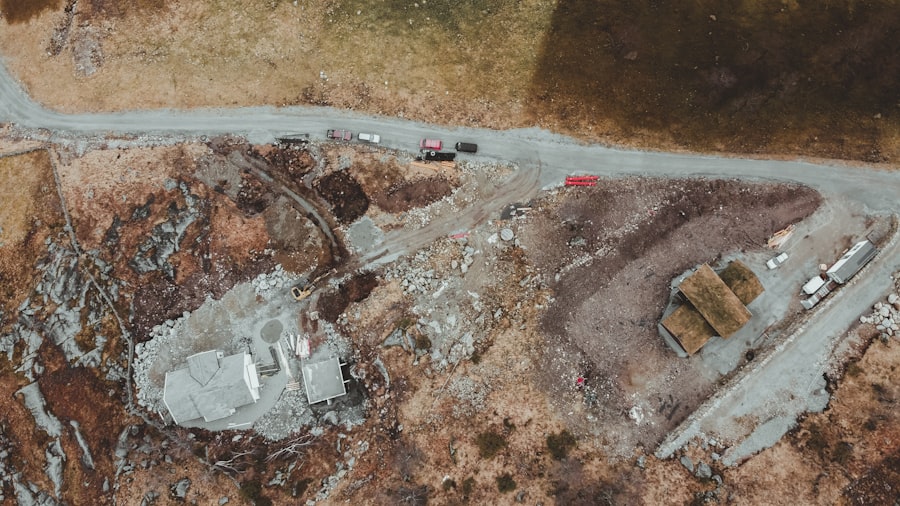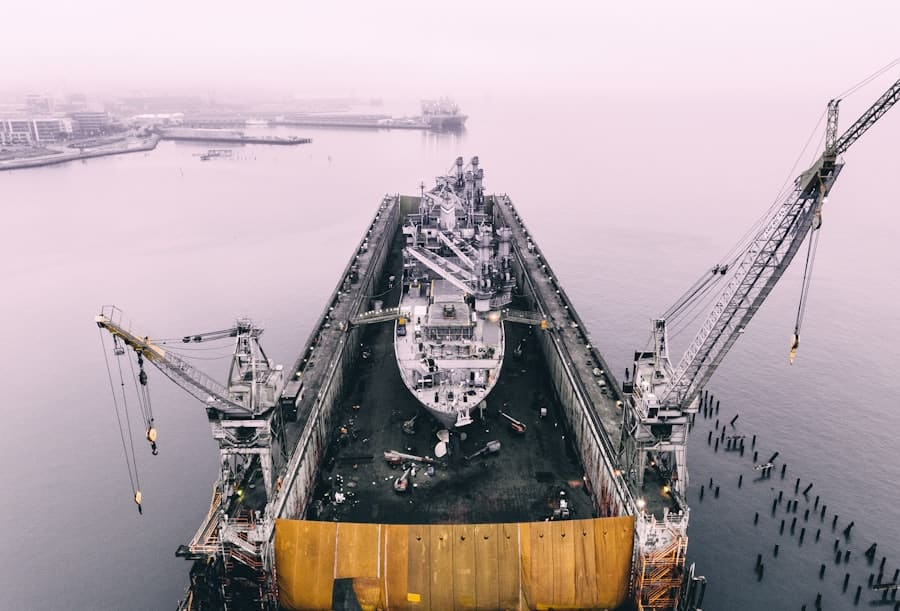The construction industry has long been characterized by its reliance on traditional methods and practices, often resulting in inefficiencies and safety hazards. However, the advent of technology has ushered in a new era, with artificial intelligence (AI) and drone technology at the forefront of this transformation. AI-powered construction drones are revolutionizing how construction sites are managed, monitored, and executed.
These drones are equipped with advanced sensors, cameras, and AI algorithms that enable them to perform a variety of tasks, from surveying land to monitoring worker safety. The integration of AI into drone technology not only enhances operational efficiency but also significantly improves safety protocols on construction sites.
Traditional drones primarily served as tools for aerial photography and basic surveying. In contrast, AI-powered drones can analyze vast amounts of data in real-time, making them invaluable for decision-making processes. They can identify potential hazards, monitor compliance with safety regulations, and provide actionable insights that help mitigate risks.
As the construction industry continues to embrace digital transformation, the role of AI-powered drones is becoming increasingly critical in ensuring safer work environments.
Key Takeaways
- AI-powered construction drones are revolutionizing the construction industry by enhancing site safety and surveillance capabilities.
- These drones offer advantages such as real-time monitoring, surveillance, and integration with site safety protocols.
- AI and machine learning play a crucial role in the development and operation of construction drone technology, enabling advanced capabilities.
- Case studies have shown successful implementation of AI-powered drones in enhancing construction site safety, with potential for future developments.
- The impact of AI-powered drones on construction site safety is significant, with the potential for further advancements in the future.
Advantages of AI-Powered Construction Drones for Site Safety
One of the most significant advantages of AI-powered construction drones is their ability to enhance site safety through proactive monitoring. These drones can conduct regular inspections of construction sites, identifying potential hazards such as unstable structures, equipment malfunctions, or unsafe working conditions. By utilizing high-resolution cameras and thermal imaging technology, drones can detect issues that may not be visible to the naked eye.
For instance, they can identify heat anomalies in electrical systems or structural weaknesses in buildings, allowing for timely interventions before accidents occur. Moreover, AI-powered drones can facilitate real-time data analysis, which is crucial for maintaining safety standards on construction sites. By continuously collecting and processing data, these drones can generate alerts when they detect deviations from established safety protocols.
For example, if a drone identifies that workers are not wearing appropriate personal protective equipment (PPE), it can notify site managers immediately. This capability not only helps in enforcing safety regulations but also fosters a culture of accountability among workers, as they become aware that their actions are being monitored.
Use of AI and Machine Learning in Construction Drone Technology
The integration of AI and machine learning into construction drone technology has transformed how data is collected and analyzed on job sites. Machine learning algorithms enable drones to learn from historical data and improve their performance over time. For instance, by analyzing past incidents and near-misses on construction sites, these algorithms can identify patterns that may indicate potential risks.
This predictive capability allows site managers to implement preventive measures before accidents occur. Additionally, AI-powered drones can optimize flight paths and inspection routines based on real-time conditions. For example, if a drone is tasked with surveying a large construction site, it can use machine learning to determine the most efficient route that minimizes flight time while maximizing coverage.
This not only saves time but also reduces operational costs associated with fuel and maintenance. Furthermore, the ability to adapt to changing conditions—such as weather or site layout—ensures that inspections remain thorough and effective.
Real-Time Monitoring and Surveillance Capabilities of AI-Powered Drones
Real-time monitoring is one of the standout features of AI-powered construction drones. These drones can provide continuous surveillance of construction sites, offering a bird’s-eye view that enhances situational awareness for site managers and safety personnel. With the ability to stream live video feeds and capture high-resolution images, drones can document progress and identify issues as they arise.
This capability is particularly beneficial for large-scale projects where traditional monitoring methods may fall short. The surveillance capabilities of AI-powered drones extend beyond mere observation; they also include advanced analytics that can assess site conditions in real-time. For instance, drones equipped with AI algorithms can analyze worker movements and equipment usage to ensure compliance with safety protocols.
If a drone detects that workers are congregating in a hazardous area or that machinery is being operated unsafely, it can alert supervisors instantly. This proactive approach to monitoring not only enhances safety but also improves overall project efficiency by minimizing downtime caused by accidents or safety violations.
Integration of AI-Powered Drones with Site Safety Protocols
Integrating AI-powered drones into existing site safety protocols is essential for maximizing their effectiveness. Construction companies must develop comprehensive strategies that outline how drones will be utilized in conjunction with traditional safety measures. This includes defining specific roles for drones in safety inspections, incident reporting, and compliance monitoring.
By clearly delineating these roles, companies can ensure that drone technology complements existing practices rather than complicating them. Training is another critical aspect of successful integration. Workers and site managers must be educated on how to interpret data collected by drones and how to respond to alerts generated by AI algorithms.
For example, if a drone identifies a potential hazard, workers need to know the appropriate steps to take to mitigate the risk. Additionally, integrating drone data into project management software can streamline communication between teams and enhance decision-making processes.
Case Studies of Successful Implementation of AI-Powered Drones in Construction Site Safety
Several case studies illustrate the successful implementation of AI-powered drones in enhancing construction site safety. One notable example is the use of drones by Skanska, a leading construction firm that has integrated drone technology into its safety protocols across various projects. In one instance, Skanska deployed drones equipped with thermal imaging cameras to inspect a large commercial building under construction.
The drones identified several areas where insulation was improperly installed, which could have led to energy inefficiencies and potential safety hazards down the line. By addressing these issues early on, Skanska was able to save time and resources while ensuring compliance with building codes. Another compelling case study involves the use of AI-powered drones by Turner Construction Company during the construction of a high-rise building in New York City.
Turner utilized drones for regular site inspections and monitoring worker compliance with safety regulations. The drones provided real-time feedback on worker behavior, allowing supervisors to intervene when necessary. As a result of this proactive approach, Turner reported a significant reduction in safety incidents on the job site compared to previous projects where traditional monitoring methods were employed.
Future Developments and Potential of AI-Powered Drones in Enhancing Site Safety
The future of AI-powered drones in construction site safety holds immense potential as technology continues to evolve. One area of development is the enhancement of autonomous flight capabilities. As AI algorithms become more sophisticated, drones may be able to operate independently without human intervention for routine inspections and monitoring tasks.
This would free up human resources for more complex decision-making roles while ensuring that safety protocols are consistently upheld. Additionally, advancements in sensor technology will likely expand the range of data that drones can collect. Future drones may be equipped with sensors capable of detecting environmental factors such as air quality or noise levels on construction sites.
This information could be invaluable for assessing worker health and safety conditions in real-time. Furthermore, as regulatory frameworks evolve to accommodate drone technology, we may see increased adoption across various sectors within the construction industry.
The Impact of AI-Powered Drones on Construction Site Safety
The impact of AI-powered drones on construction site safety is profound and far-reaching. By enhancing monitoring capabilities, improving data analysis through machine learning, and integrating seamlessly with existing safety protocols, these drones are transforming how construction companies approach risk management. The case studies highlight tangible benefits realized by organizations that have embraced this technology, showcasing its potential to reduce accidents and improve overall project efficiency.
As the construction industry continues to navigate challenges related to safety and efficiency, the role of AI-powered drones will undoubtedly expand. With ongoing advancements in technology and an increasing focus on worker well-being, these innovative tools will play a crucial role in shaping the future landscape of construction site safety practices. The journey toward safer work environments is well underway, driven by the capabilities offered by AI-powered drone technology.
A related article to How AI-Powered Construction Drones Are Enhancing Site Safety is Top 10 Best Laptops for SolidWorks in 2023: Expert Guide with Lenovo & Dell Workstations. This article provides valuable information on choosing the best laptops for SolidWorks, a popular software used in the construction industry for 3D modeling and design. Having the right tools, such as a powerful laptop, can greatly enhance productivity and efficiency on construction sites.
FAQs
What are AI-powered construction drones?
AI-powered construction drones are unmanned aerial vehicles equipped with artificial intelligence technology that allows them to autonomously perform tasks such as site surveying, progress monitoring, and safety inspections on construction sites.
How do AI-powered construction drones enhance site safety?
AI-powered construction drones enhance site safety by providing real-time monitoring of construction activities, identifying potential hazards, and conducting safety inspections from a safe distance. They can also help in ensuring compliance with safety regulations and protocols.
What are the benefits of using AI-powered construction drones for site safety?
Some benefits of using AI-powered construction drones for site safety include improved efficiency in safety inspections, early detection of safety hazards, reduced risk to workers, and the ability to gather and analyze data to improve safety protocols and practices.
Are there any limitations to using AI-powered construction drones for site safety?
Some limitations of using AI-powered construction drones for site safety include the initial cost of investment, the need for skilled operators to manage the drones, and potential privacy concerns related to data collection and monitoring. Additionally, adverse weather conditions and airspace regulations can also impact the use of drones for safety monitoring.



